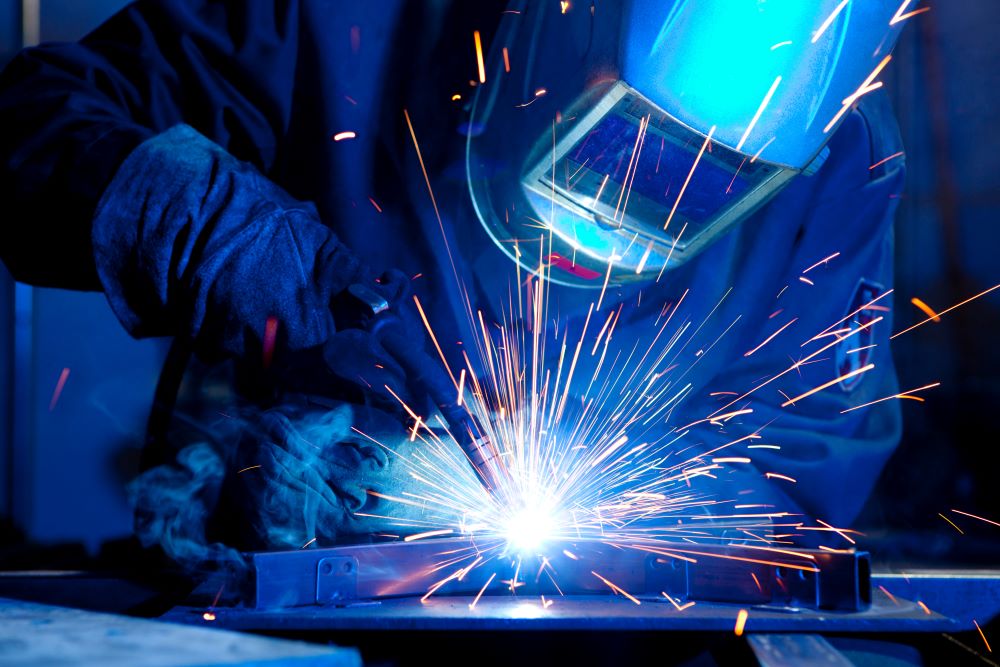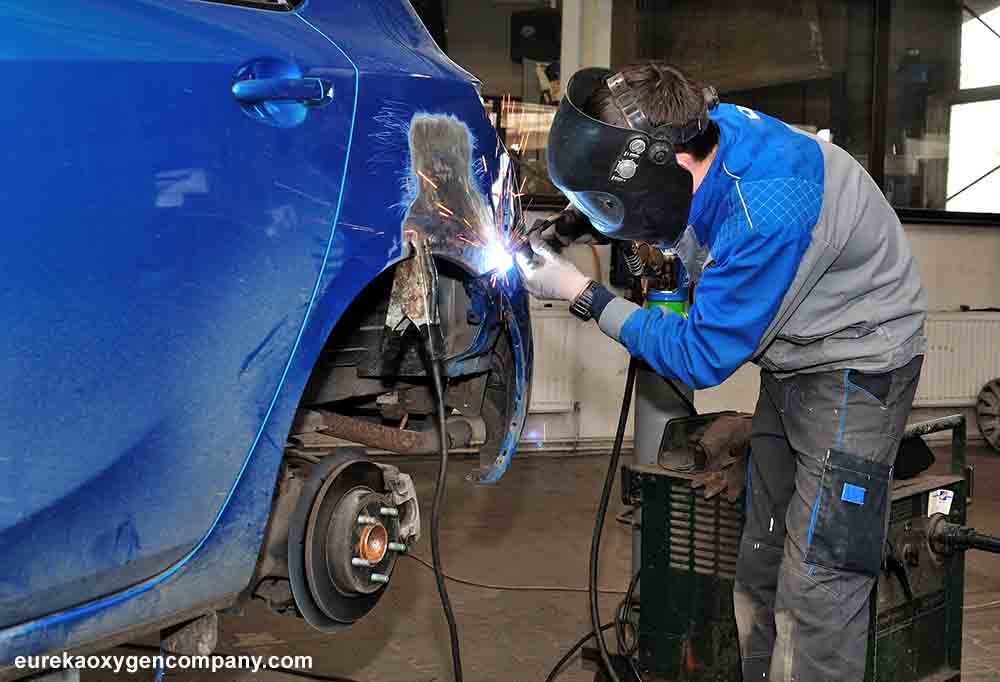Expert-backed steps to deal with warping in Montana Mobile Welding and Repair Belgrade
Common Welding Repair Issues and How to Address Them Efficiently
Welding repair services typically come across a variety of concerns that can threaten the integrity of the final product. Usual problems include insufficient infiltration, porosity, and imbalance, among others. Each issue presents special difficulties that need specific methods for resolution. Understanding these problems is crucial for welders intending to enhance their end results and skills. This conversation will certainly check out these usual welding repair work problems and efficient methods to resolve them.
Insufficient Penetration
Poor infiltration occurs when the weld steel stops working to fully fuse with the base material, resulting in weak joints and prospective structural failures. This concern usually comes from inadequate warmth input, incorrect electrode angle, or incorrect welding speed. Welders might encounter inadequate infiltration as a result of a mistake of the necessary specifications for a certain product density or type. Additionally, contamination on the base material's surface can hinder reliable bonding, intensifying the trouble. To address inadequate penetration, welders should guarantee suitable setups on their devices and maintain a clean job surface. Routine examination of welds is advised to recognize any deficiencies early, permitting prompt improvements and the prevention of compromised architectural integrity in bonded settings up.
Porosity
Porosity is a typical flaw in bonded joints that manifests as small gas bubbles entraped within the weld metal. This problem can endanger the honesty of the weld, leading to lowered stamina and possible failing under tension. Belgrade Fabrication. Porosity normally occurs from contamination, dampness, or incorrect welding strategies, which allow gases to leave into the molten weld pool. To resolve porosity, welders must guarantee correct surface area preparation, preserve a tidy functioning setting, and use suitable welding parameters. In addition, picking the right filler material and securing gas can mitigate gas entrapment. Routine examination and screening of welds can assist identify porosity early, guaranteeing prompt corrective actions are taken, consequently preserving the quality and integrity of the bonded framework
Misalignment
Imbalance in welding can arise from numerous elements, consisting of inappropriate arrangement and thermal development. Recognizing the origin creates is necessary for reliable resolution. Several correction methods are offered to realign elements and assure structural honesty.
Reasons of Misalignment
Welding imbalance frequently originates from a variety of underlying issues that can compromise structural stability. One primary reason is improper fit-up of parts before welding, which can result in voids and unequal surfaces. Variations in thermal growth throughout the welding procedure can also cause distortion, particularly if the materials being joined have various coefficients of development. In addition, inadequate fixturing and clamping might fall short to hold parts safely in area, leading to movement throughout welding. Poorly maintained devices, consisting of welding makers and tools, may introduce variances in the weld bead, additional adding to imbalance. Lastly, driver error, stemming from inadequate training or experience, can also play a considerable role in developing misaligned welds.
Adjustment Methods Readily Available
Attending to imbalance efficiently needs a mix of rehabilitative methods tailored to the certain concerns available. One usual technique is making use of jigs or fixtures to hold parts in the correct placement throughout welding, guaranteeing constant positioning. In addition, pre-heating the products can aid reduce distortion and enhance fit-up. For significant misalignment, mechanical realignment techniques, such as using hydraulic jacks or clamps, can be used to deal with the position before welding. Post-weld warmth therapy may also be necessary to ease stress and anxieties brought on by misalignment. Mindful inspection and modification throughout the configuration phase can prevent imbalance concerns from ending up being substantial troubles, advertising a smoother welding procedure and boosting overall structural honesty.
Distortion
Distortion is a typical difficulty in welding that can occur from different aspects, consisting of uneven home heating and air conditioning. Recognizing the reasons for distortion is essential for implementing effective avoidance strategies. Addressing this concern not just boosts structural honesty yet also boosts the general high quality of the weld.
Reasons for Distortion
When subjected to the intense warmth of welding, materials commonly undergo changes that can cause distortion. This sensation primarily emerges from thermal development and tightening during the welding procedure. As the weld location heats up, the material increases; upon cooling, it gets, which can develop interior stress and anxieties. In enhancement, irregular home heating across a workpiece can aggravate these anxieties, resulting in warping or flexing. The sort of product also plays a significant function; steels with differing thermal conductivity and coefficients of growth might respond in a different way, causing uncertain distortions. In addition, inadequate joint style and inadequate fixturing can add to imbalance throughout welding, increasing the chance of distortion. Comprehending these causes is essential for efficient welding repair and prevention methods.
Avoidance Techniques
Effective avoidance techniques for distortion during welding focus on regulating warmth input and ensuring appropriate joint style. Maintaining a consistent heat input assists to reduce thermal growth and tightening, which can bring about distortion. Using strategies such as my blog preheating the work surface can also decrease the temperature gradient, promoting consistent heating. Additionally, selecting proper joint designs, such as T-joints or lap joints, can enhance security and lower stress her explanation and anxiety focus. Applying appropriate fixturing to secure the workpieces in position better aids in keeping positioning during the welding procedure. Staggered welding series can distribute heat a lot more equally, protecting against localized distortion. By applying these approaches, welders can greatly reduce the possibility of distortion and improve the general top quality of their welds.
Fracturing
Breaking is a typical problem come across in welding fixings, frequently resulting from numerous variables such as incorrect cooling prices, product selection, or insufficient joint preparation. The event of splits can significantly endanger the integrity of the weld, resulting in prospective failings during operation. To resolve this problem, welders must initially examine the origin, ensuring that materials are compatible and properly selected for the certain application. Furthermore, controlling the cooling price throughout the welding process is vital; quick cooling can induce stress and anxiety and cause cracking. Correct joint layout and preparation additionally add to reducing the risk. Implementing these techniques can boost weld top quality and sturdiness, eventually lowering the possibility of splitting in ended up weldments.

Incomplete Fusion
A considerable issue in welding repair work is insufficient combination, which takes place when the weld steel does not adequately bond with the base product or previous weld passes - Montana Mobile Welding and Repair. This defect can bring about weaknesses in the joint, potentially compromising the stability of the welded framework. Elements adding to incomplete combination consist of insufficient heat input, incorrect welding technique, and contamination of the surfaces being signed up with. To resolve this concern properly, welders ought to assure correct pre-weld cleaning and surface area preparation, in addition to change their welding specifications to attain appropriate infiltration and fusion. Regular evaluation during the welding process can also help determine incomplete fusion early, enabling prompt corrective actions to improve the total quality of the weld
Overheating
While welding repair work can enhance architectural stability, overheating provides a substantial difficulty that can lead to product degradation. Extreme warmth throughout welding can alter the mechanical properties of metals, causing decreased stamina, enhanced brittleness, and warping. This phenomenon is especially essential in high-stress applications where structural dependability is click here to find out more paramount. Recognizing getting too hot can include visual inspections for staining or distortion, as well as monitoring temperature during the welding procedure. To mitigate the risks related to getting too hot, welders ought to employ ideal techniques, such as controlling warmth input, adjusting traveling speed, and making use of appropriate filler materials. Additionally, applying pre- and post-weld warmth therapies can aid bring back material residential or commercial properties and enhance the total top quality of the repair work, making certain lasting efficiency and safety and security.
Frequently Asked Questions
What Are the Typical Indications of a Welding Problem?

How Can I Check My Welds for High quality?
To check welds for top quality, one can utilize aesthetic evaluations, ultrasonic testing, and radiographic techniques. Each technique guarantees architectural honesty, identifies issues, and verifies adherence to specified requirements, ultimately boosting the integrity of the welded joints.
What Safety and security Preventative Measures Should I Take While Welding?
When welding, one need to focus on security by using suitable personal protective devices, making sure correct ventilation, securing combustible materials away, keeping a tidy workspace, and understanding environments to stop injuries and mishaps.
Can I Fix a Weld Without Remodeling the Entire Joint?
Repairing a weld without redesigning the entire joint is possible, depending upon the damage (Belgrade). Methods such as grinding, adding filler material, or using a welding process can effectively address certain flaws while protecting the bordering structure
What Equipment Are Essential for Efficient Welding Services?
Crucial devices for efficient welding fixings consist of a welding equipment, wire brush, mill, protective equipment, clamps, and filler materials. Each device plays a crucial duty in making certain high quality and safety throughout the repair procedure. Porosity commonly occurs from contamination, moisture, or incorrect welding strategies, which allow gases to get away right into the liquified weld swimming pool. Improperly kept devices, consisting of welding machines and tools, may introduce variances in the weld grain, further contributing to misalignment. When subjected to the extreme warm of welding, products commonly undergo modifications that can lead to distortion. Splitting is a common issue experienced in welding repairs, usually resulting from numerous variables such as incorrect cooling prices, product selection, or poor joint preparation. A considerable problem in welding repairs is insufficient blend, which takes place when the weld metal does not properly bond with the base material or previous weld passes.